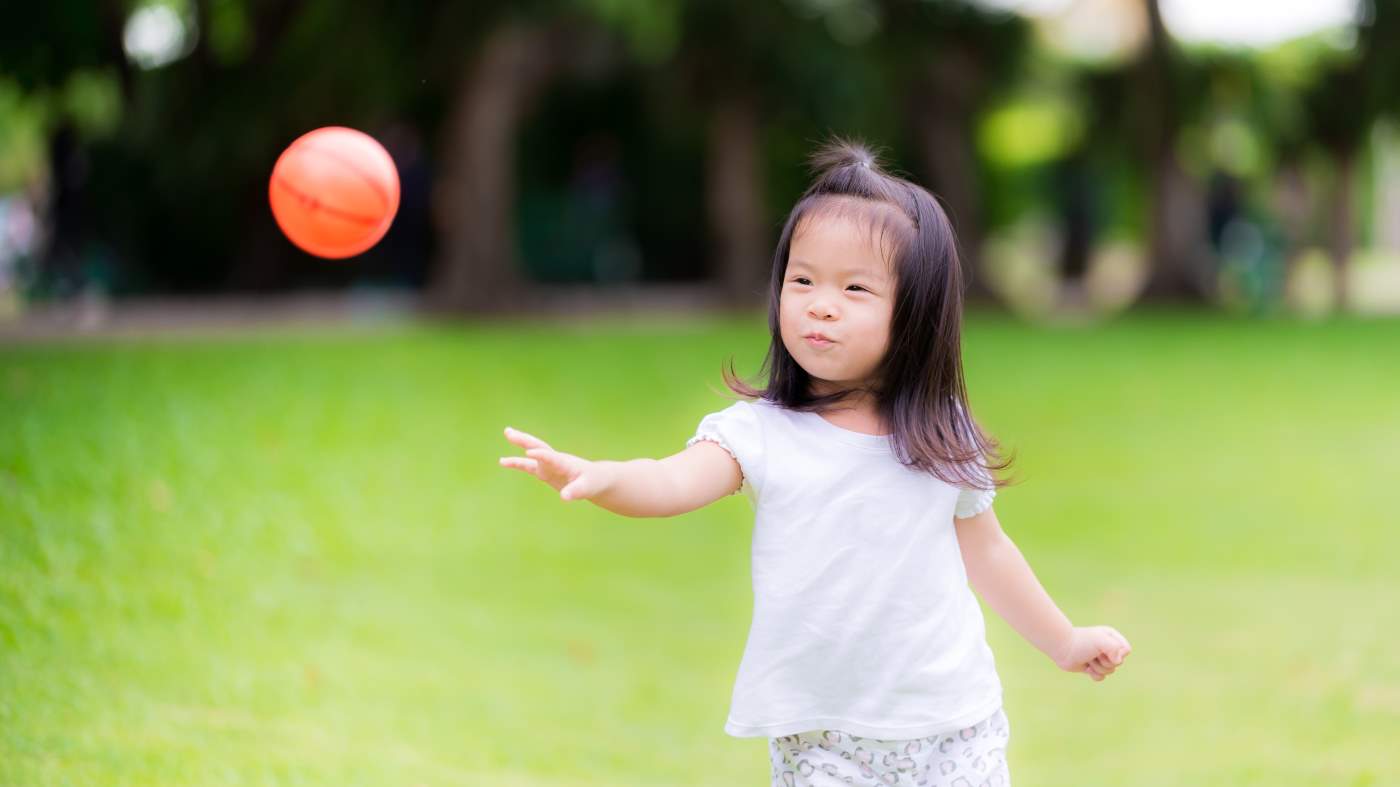Get ready, aim, and throw with might – soon that ball will be thrown just right!

Ball games can provide hours of entertainment for young children, and as their skills in throwing improve, they’ll become open to a wider range of ball-led activities. When you child throws it requires object-control skills, which means throwing, catching and striking.[1] So for them, it means being able to hold onto a ball and throw it. This skill forms the basis for other object control skills, like holding a bat or racquet.
Over and underarm throwing require some of the same skills, although they are very different throws.
Throwing using both methods is a complex skill that requires your child's body and brain to work together to achieve a movement goal.[2]
It’s a manipulative skill that involves applying a pushing force to an object to propel it.
Before a ball can be thrown, your child must first and foremost keep a firm grip on the ball and in these early stages they’ll keep their feet still as they throw and release it.[2]
Both types of throws rely on coordinated movements of the humerus, forearm and trunk.[1]
The main difference between an underarm and overarm throw.
When an overarm ball is released, the arm is lifted in the air and travels forward and down to ground. Whereas an underarm throw will see the arm swing down and back, reaching behind the body before moving back forward and follow through after ball release to at least chest level, a little bit like a pendulum.
There are many variables to a good throw, and it’ll take some practice to master both types.
When practising both throws, it’s perfectly normal for the ball to simply drop in front of them at times or to be released too early. Experimenting with this will help your child understand a little more.
And as a throw only really uses one arm, you need to work out how to generate enough force to propel the ball in a planned direction.[2] To throw with power and a greater distance, your child must have good control of their posture and core to help stop them from falling over,[3] and this will take time to work out.
In every throw they make, they’ll also start to make connections between how to swing their arm and when to release the ball. For example, the higher their arm travels before releasing the ball in an underarm throw, the higher the ball will go, and vice versa. And a slow arm swing will produce a shorter throw.
As they become more competent with throwing, your child’s body will rotate as they throw the ball and eventually, they’ll take a step forward to help keep their body steady.
It's during these later stages that their proprioceptive accuracy will improve and they’ll have more control of their arms and body position to throw a ball a greater distance. For now, there’s enough going on, and their aim is simply to gain control of when to release the ball.
References:
[1] Gregory Payne, V., Isaacs, L. (2012) Human Motor Development A Lifespan Approach. McGraw Hill.
[2] Sugden, D., Wade, M. (2013) Typical and Atypical Motor Development. Mac Keith Press.
[3] Goodway, J.D., Ozmun, J.C., Gallahue, D.L. (2021) Understanding Motor Development Infants, Children, Adolescents, Adults. Eighth Edition. Jones & Bartlett Learning.